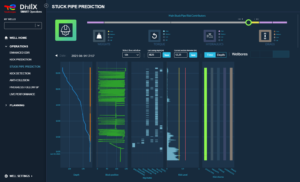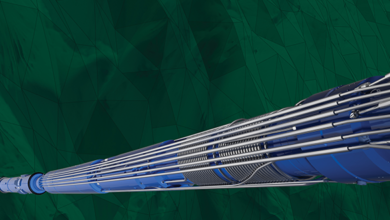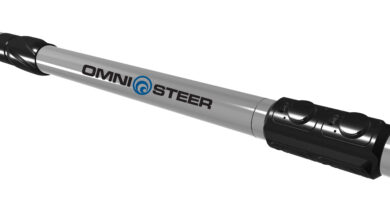TotalEnergies aims to ‘pioneer a new way of drilling’ with DrillX
Operator working to ‘fundamentally reimagine’ its drilling business through the 3 pillars of smart data, smart engineering and smart operations
By Stephen Forrester, Contributor
While the drilling industry has made significant progress on how wells are drilled, particularly through the implementation of new downhole tools and systems, TotalEnergies believes the drilling discipline requires a holistic evolution in order to meet changing needs and expectations. To ensure continued leadership in the technology domain while delivering wells more safely and cost effectively, the operator believes it is critical to have modern, integrated and automated tools to better leverage real-time well data. To that end, the company’s Drilling & Wells group has put its whole weight behind its DrillX initiative to spearhead TotalEnergies’ digital transformation.
“This isn’t implementing a few software programs – it’s about really transforming the way we prepare, drill and deliver our wells, as well as how we monitor them over their entire lifecycle,” said David Vavasseur, Head of DrillX. The initiative intends to fundamentally reimagine TotalEnergies’ drilling business, beginning with how people work on the rig. With DrillX, the company aims to pioneer a new way of drilling – one driven by data and digital technologies, leading to smarter rigs and stronger, interconnected teams.
Safety is a key focus area of the DrillX program, by using real-time data to make better decisions and prevent well control events. Moreover, enabling better and more consistent performance will allow TotalEnergies to be leaner and more efficient. Even incremental cost savings can be significant when you consider that, in 2019, its Drilling & Wells group had expenditures of more than $3.7 billion.

Additionally, the company believes a digital transformation can address the generational gap. “The younger generation isn’t as interested in oil and gas as it was in the past, but ultimately we still need to keep fueling the earth, responsibly, paving the way to net zero by 2050 ” Mr Vavasseur said. To make this industry attractive to younger people while ensuring that seasoned workers embrace digital change, TotalEnergies is taking up a thorough rethinking of its wells operations.
The DrillX program was conceived in 2017 and brought to life in 2018. Early efforts focused on engaging relevant stakeholders across the extended Drilling & Wells community, both within TotalEnergies and externally. In fact, to develop the DrillX roadmap, the company worked with more than 120 drillers and exchanged information with many other operators and service companies, such as Chevron, Equinor, Shell, Petrobras, Schlumberger, Halliburton and Baker Hughes.
The DrillX roadmap targets complete well lifecycle integration and is broadly split into three pillars: smart data, smart engineering and smart operations. TotalEnergies developed a catalog of more than 50 use cases, varying in scope from simple workflow optimization to using machine learning and predictive analytics to automatically mitigate drilling dysfunctions. The company then used all this information to establish a timeline from 2021 to 2025 for full program implementation and value quantification.
Smart data recognizes that, without good data, little else is possible. “What we’ve learned over the past two years is the importance of the data,” Mr Vavasseur said. “The data is often poorly organized and poorly stored, in various formats. We want to urbanize that data. Sometimes you need to knock down buildings to build new ones, and that’s exactly what we’re trying to implement here.” TotalEnergies wants to build bridges between different data sources that previously have not been able to communicate or be used together. Better data quality and better governance throughout the digitization initiative are also objectives.
Smart engineering is about providing smart access to the data. “When we say access to offset well data and technical knowledge, we mean relevant data and technical knowledge. We want engineers to find the right information in the right place when they look for it,” Mr Vavasseur explained. The DrillX platform will then automatically integrate the data into future well design using an integrated suite of apps, such as trajectory design, anti-collision, casing point selection and casing design.
The purpose of automating well design is to eliminate what Mr Vavasseur called the debugging curve – usually the first three or four wells of a drilling campaign. This has massive cost saving implications. “Depending on the complexity of the prospect and the wells, sometimes the time difference between the first well and the fifth or sixth well is half or better,” Mr Vavasseur explained. Imagine if the first well takes 120 days and the fifth well takes 30 days. What if the well design was automatically created so that each well achieved optimum performance without needing the extra time to accelerate – not to say eliminate – the learning curve? In complement to this, interactive operations planning through a digital twin can enable drilling personnel to make informed decisions at the right time.
Smart operations come in during the execution of a well, with DrillX providing a digital assistant for well supervisors. Recognizing that these supervisors are often inundated with information, the digital assistant filters through data in real time to provide only what is relevant to a particular scenario. The objective is to allow the supervisor to prevent any drilling or well control events. For example, DrillX already provides the user with kick risk and stuck pipe risk prediction.
Drilling automation is also part of the smart operations pillar, as DrillX allows some sections to be drilled automatically. “A driller can use a system that sets an ROP and drills ahead, adjusting all other parameters automatically. If you start to see drillstring whirl or stick/slip, the system will adjust automatically by picking up and slacking off to address the problem, then continue drilling,” Mr Vavasseur explained. TotalEnergies is currently on what the company calls Stage 3, or highly automated drilling operations. Within the next two years, he added, the company hopes to advance to fully automated drilling, with the driller only present as a contingency if something goes wrong.
When it comes to the human element, TotalEnergies wants to rejuvenate antiquated processes and workflows that limit the productivity of qualified professionals. With DrillX, “we want to re-center people on high-added-value tasks,” Mr Vavasseur said. “We don’t want people to waste time on menial tasks like finding paperwork or searching for information; we want them to be doing what they’re good at. An engineer should be providing the best value to the well.”
The DrillX platform itself is entirely cloud-based, running on Microsoft Azure. “You have the front end, which is the web interface, and the back end, which is interchangeable. For example, we’ve already partnered with companies on things like casing design, torque and drag and hydraulics because we don’t develop or maintain that ourselves. We want concentrate on what makes sense for TotalEnergies, and the platform is defined and set up so we can exchange data with the rest of the organization and other organizations, as well.”
The platform’s multitiered architecture was designed to enable flexibility between purchasing worthwhile microservices (apps) and developing products internally for competitive advantage. This provides several key benefits, Mr Vavasseur said. By allowing collaboration with external groups, different services can be rapidly developed in parallel. As DrillX is scalable by design and the platform’s cloud-based interface makes data and services easily accessible by internal and external stakeholders, new use cases can also be built quickly. The goal of it all: cost optimization.
Because this digital journey is ongoing, there are many new developments still under way. TotalEnergies is using machine learning, for example, to build data-driven algorithms that predict certain downhole events. “The more we drill, the more data we obtain and the more we can refine it,” Mr Vavasseur said. “Not only can we now predict when the drillstring might get stuck, mitigating any impact to time or cost, but more importantly we can also predict a well kick up to three hours before it happens, which has a real impact on major risk prevention.”
Other ongoing initiatives include creating and implementing a true digital twin for full well lifecycle monitoring, as well as the digitization of the well delivery process. This will begin with digitalizing the exchanges with business stakeholders during the establishment of the well statement of requirements, and translate everything into a digital engineering program for use across the company.
TotalEnergies is also working on carbon footprint reduction and energy efficiency, engaging with drilling contractors to obtain sensor data from rig power systems. “On the new rigs, you know in real time the load of your engines and power consumption,” Mr Vavasseur said. “We really want to be able to map and understand where our energy consumption is coming from so that we can adapt the way we work. This could also mean changing the way we drill. For example, someone might receive a suggestion that they could adjust the drilling parameters to save energy without compromising drilling efficiency.”
TotalEnergies is currently running a DrillX Energy Efficiency pilot program on a dynamically positioned rig offshore Angola, including typical drilling processes but also encompassing current and metocean data. This will allow them to understand the impact of the thrusters and currents on energy consumption and, ultimately, reduce emissions. DC
Click here to watch a video with TotalEnergies Deputy VP Drilling & Wells Xavier Rouzeaud.




